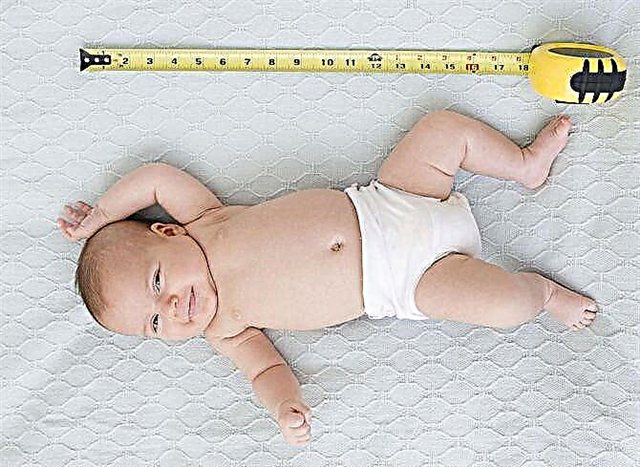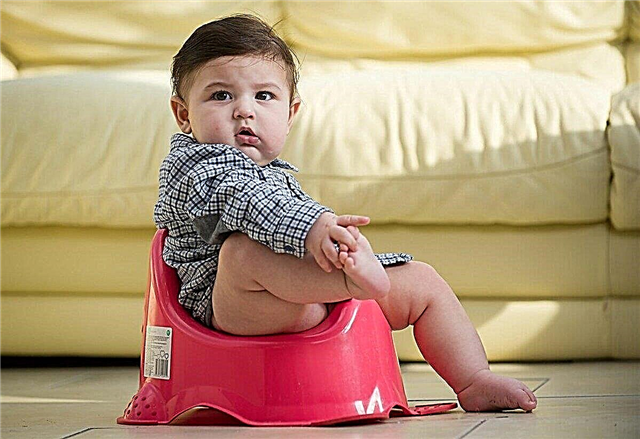
Let's imagine a horse running across a field. What words can describe this picture? Freedom, confidence, grace, beauty, speed ... the list goes on.


This picture evokes mostly positive emotions when we are just observers. If there is an opportunity to touch nature with the help of horses, even more positive feelings arise!
Adults squeal with delight when they first mount a horse. And what to say about children and, moreover, "special" children. What flurry of emotions is experienced by a small person who is limited in physical capabilities? He does not know how to walk, but he sits on a horse himself - from this he is extremely happy!

In ancient times, humanity was much closer to nature than it is now. It is known that even then they resorted to treatment with animals, and they healed! Many methods of zoomedicine originated in the time of Hippocrates and have survived to this day, but they are gaining popularity only now. Each has its own characteristics and strengths. Let's consider one of them - hippotherapy.
What is it?
Hippotherapy is one of the most effective methods of treating animals through horses. It aims to fight many diseases.

Some people call hippotherapy horse riding therapy. Yes, the main effect of the treatment is achieved precisely through the exercises performed on the horse. But still it cannot be said that these two concepts are absolutely identical. After all, an important condition for healing is not only horse riding, but also just communication with the horse, caring for it.
The treatment uses an integrated approach: a person warms up and develops muscles while riding a horse, gets a crazy boost of energy and just great pleasure from communicating with this animal.

Indications
Most often they struggle with diseases such as cerebral palsy and various disorders of the musculoskeletal system, as well as autism.
Indications include:
- Scoliosis of 1.2 degrees or other disorders of the spine;
- Various joint disorders;
- Down syndrome;
- Polio;
- Neuroses and other diseases of the nervous system;
- Hearing impairment;
- Visual impairment;
- Speech disorders;
- Malfunctions of the senses;
- Strokes;
- Sclerosis;
- Overweight;
- Delayed mental and physical development.


Sometimes adults with bronchial asthma, chronic bronchitis, diseases of the cardiovascular system are prescribed hippotherapy in combination with other types of treatment. Exercises on a horse create the effect of intense training, but at the same time, they are very gentle, which eliminates side reactions and the risk of overstrain in these diseases. Also, sometimes hippotherapy is used in the treatment of alcoholism and drug addiction.
It is known that during the wars they were treated with horses. Having been injured in battle, they accelerated rehabilitation by riding a horse and, I must say, achieved success.

And the case of a girl with polio and who was cured with the help of hippotherapy made a splash. She not only recovered after 9 years of training, but also received a silver medal at the Paralympic Games.
Contraindications
But like every type of treatment, hippotherapy has some contraindications. These include:
- Epilepsy;
- Severe forms of diseases of the nervous system;
- Allergy to horse hair;
- Osteoporosis (increased fragility of bones);
- Osteomyelitis (infectious inflammation of the bone tissue);
- Hemophilia;
- Scoliosis 3.4 degrees.
As in cases of healing with other animals, such as dogs or dolphins, fear of a horse is not considered a contraindication. The instructor should help the person find contact with the four-legged doctor.
And it often happens that by the end of the lesson the patient, who was afraid of the horse, does not want to part with it.

Principles of therapeutic action
Hippotherapy is a unique method of treatment. It has a complex effect on the body. Two basic principles can be distinguished:
- Physical (the direct impact of the horse on the rider when performing exercises or simply the horse's movement);
- Psychological, or emotional (psychological relief when dealing with a horse).


Basic in the treatment are the motor impulses that the animal transmits to the rider. The horse has a specific stroke of movement, a special move, similar to that of a person. Unbeknownst to himself, the patient makes efforts. After all, he needs to strain his muscles so as not to fall, keep balance, coordinate his movements. Sitting on a horse, almost all muscle groups work for the rider, those that are almost not involved in normal conditions are affected.
As a rule, hippotherapy is performed without a saddle, because the body temperature of a horse is higher than that of a person. Thus, the already warmed muscles are massaged, and this greatly enhances the effect of the treatment.

As for the positive emotional effect, its significance can hardly be overestimated. The child feels much more confident being close to the horse. Children with cerebral palsy can do just fine without strollers and crutches on horseback, and this is a very powerful self-affirmation for them.
Communication and caring for the horse is very beneficial for children. This teaches them kindness, sensitivity, a sense of responsibility, develops the ability to trust. Some kids may even share secrets with these animals. They learn to listen to their partner and be more attentive. A sense of aggression and anxiety leaves them.
Often, little patients do not realize that they are being treated, they perceive horseback riding as entertainment, therefore there is no feeling of resistance, and as a result, the treatment bears fruit faster.

Healing effects
The effectiveness of hippotherapy has been proven for a long time and is supported by the results obtained during the treatment. Of course, in difficult cases you need to deal with it for years, and this is a lot of work. But it's worth it. For some patients, a few sessions are enough and visible changes can be noticed, but this is rare.
There are very serious cases of diseases in disabled children. For example, it is known that muscle tone in children with cerebral palsy is so strong that sometimes even an experienced doctor or masseur cannot feel them.
Horseback riding is very relaxing and significantly reduces muscle tone. Plus, it improves blood flow, which also helps to improve mobility and the early saturation of brain cells with oxygen.
Thanks to the exercises, the general physical condition of the patient improves, spasms are relieved, and coordination of movements improves. The child is better oriented in space. Well, the psychological factor plays an important role - there is self-confidence.

As for autistic children, here hippotherapy classes carry only a psychological load. The effect of exercise is sometimes noticeable immediately. The fact is that the child and the horse interact very closely. It might remind him of friendship.
Thus, the little patient becomes more open to communication, fears and feelings of anxiety, excitability, isolation leave him, he becomes more attentive, more sociable and more trusting, reactions become faster. As a result of the treatment, psychological harmony is achieved.
Exercising your horse will help you correct your posture. If the degree of the disease is low, all changes in the spine are reversible. Even after some time after hippotherapy, the back straightening reflex remains, it just needs to be maintained.

Hippotherapy began to be used abroad earlier, and the list of diseases subject to this method of treatment is somewhat larger. So, for example, in addition to the above problems, obesity and cellulite are also treated with the help of hippotherapy. The instructor develops a special set of exercises on the horse so that the patient can cope with excess weight.
The horse is a very intelligent animal with a phenomenal memory. She remembers a person's habits, his gait, gestures, facial expressions, very well feels the emotional state of a person and captures his mood and intonation. Despite its size, the horse is completely predictable for humans. This is the key to success in treatment. A person very easily makes contact with a horse and trusts it completely.


Hippotherapy is an independent technique. Still, the treatment is best done in combination with other procedures. For example, in addition to therapeutic riding, exercise therapy, the use of therapeutic mud, massages, physiotherapy, etc. are sometimes prescribed.
The main stages of the program
Hippotherapy classes can be conducted individually or in a group. The frequency of classes is 1-2 times a week. If the patient is a visitor and undergoes a rehabilitation course on the road, classes are held daily. The patient himself, a horse, an instructor-hippotherapist and a groom will be involved in the course. The duration of one lesson is 15-45 minutes.


So what are the main steps involved in equine treatment?
- The first stage is introductory (or adaptation). Hat this stage, the history of the disease is studied, the necessary set of exercises is prescribed, the acquaintance with the horse, with the instructor, and the addiction of the child. The patient can observe, pet the animal, treat it. Then, when the adaptation has passed, you can get on horseback and dismount. This stage is usually fast. But some children may need more than one activity.
- The second stage is preparatory (just before performing the main exercises). At this stage, the horse is already set in motion. The child gets used to the horse's move, learns to ride, maintain balance, correctly coordinate his movements - the correct landing is formed. Breathing exercises can be performed.
- The third stage is the main one. At this stage, the main exercises are performed, which are prescribed by the hippotherapist.
- The fourth stage is the final one. At this stage, the results are consolidated, inaccuracies in the exercise are corrected.
The exercises can be performed in various positions: lying on your stomach, on your back, sitting facing the horse's neck, sitting with your back. The instructor may require the exercise to be done with eyes closed when the horse is standing, walking or trotting. This can be a variety of inclinations, changing positions on the horse, throwing the ball, various exercises for flexibility and other movements. The complexity and nature of the exercise depends on the patient's illness.
It is clear that the horse used for treatment must be specially trained, calm, fearless and friendly. Almost every animal can be prepared for training. In hippotherapy, only hot-blooded horses are avoided. For example, Arabian purebreds, Akhal-Teke horses, thoroughbred riding horses have a genetically inherent unrestrained movement. Therefore, a child cannot be put on such an animal.

Centers in Russia
Hippotherapy in Russia has been developing since 1991. Until that time, we simply did not have specialists. Now there are educational institutions where you can master the specialty of a hippotherapy instructor.
In Russia, this technique is practiced in almost every region. There are both large rehabilitation centers and small equestrian clubs providing horse treatment services. Sometimes, on the basis of sanatoriums that accept people with various diseases of the musculoskeletal system and the nervous system, there are horse therapists. Hippotherapy is especially developed in Moscow, St. Petersburg, Novosibirsk, Rostov, Kazan, Ufa, Sevastopol, Saransk, Kursk, Krasnoyarsk, Yekaterinburg.


Lesson cost
Hippotherapy prices vary from 400 to 1000 rubles per session. It depends on the qualifications of specialists, the duration of the classes, the popularity and popularity of the institution, its location. In large cities, of course, prices are higher.
In Russia, there are several organizations engaged in medical horse riding for free.
For example, since 2007 the St. Petersburg charitable organization Green World of Childhood conducts absolutely free classes for disabled children. Employees monitor the results of each group, obtained during the training, and keep statistics.
In the same 2007, another charitable organization began its activities "Reins of Life" which is located in the city of Alushta, Republic of Crimea.


You can learn more about the Reins of Life organization in the following video.
Reviews
Not all doctors trust such a technique as hippotherapy. After all, it belongs to non-traditional types of treatment. But it has proven itself well for a long time. The main indicator is the feedback from parents who have "special" children.
People talk about the changes that have happened to their children after practicing medicated horse riding. It is noted that the child's physical activity and general physical condition improve, and fine motor skills develop. Those who can walk have a more confident gait.

For many children, who do not understand whether objects are far or near, the problem of their relationship in space completely disappears thanks to classes. At the same time, earlier the child could constantly touch the object or hit it, incorrectly assessing its distance.
Those children who were completely closed to others begin to communicate and even smile. Completely non-contact children willingly run to classes for four-legged doctors.
People with back pain experience symptom relief or disappearance.
Children who have completed a full course of hippotherapy do not want to part with their four-legged friends, as they are very attached to these animals and the positive emotions that they give.
Even adults say that by communicating with a horse, you forget about all the problems.


The disadvantages include the high cost of classes, because not everyone can afford to give a considerable amount of money for several months or even years. Also, some people find it difficult to find centers nearby that provide this type of rehabilitation. They are mainly concentrated in large cities.

Tips for parents
So, have you decided that horse treatment can help your child? Just weigh the pros and cons. Be sure to consult with your doctor, make sure that none of the contraindications apply to your case. If there are no obstacles, then you can start classes.
Read, find out from friends where their children studied, whether they have achieved any results. When you come to the club, ask the instructor about his education and qualifications.

Well, one more piece of advice: trust! Trust the horse and the instructor, help your child in everything as needed. Remember, horse riding is a lot of work, although it is enjoyable.
And it is also worth understanding that hippotherapy cannot completely cure a child if he has congenital defects, cannot return missing body parts, but any other treatment will not cope with this task. But to alleviate the patient's condition and significantly improve the picture of hippotherapy is possible.
If, after birth, there were any injuries or changes in the body that led to disability, horses can completely heal you. The main thing is to be patient and believe!
How hippotherapy helps with autism, see the video below.



